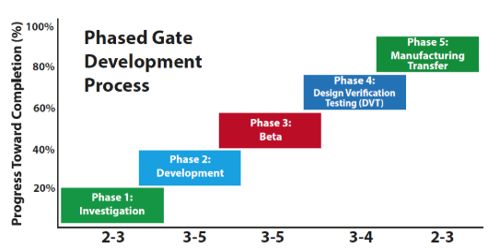Phase-gate Process
A phase-gate model also referred to as a phase-gate process, is a project management technique in which an initiative or project (e.g., new product development, process improvement, business change) is divided into stages or phases, separated by gates. At each gate, the continuation of the process is decided by (typically) a manager or a steering committee. The decision is based on the information available at the time, including the business case, risk analysis, and availability of necessary resources (e.g., money, people with correct competencies). The life of a product in the market is very limited and this has made it very difficult for the companies who need to keep upgrading their existing products and create new ones to remain in the race. The phase-gate model may also be known as a stage-limited commitment or creeping commitment.
Stages in the Stage Gate Process
The stage gate process has six crucial stages which when executed correctly ensures a surefire successful project for the customers.
- Conceptualizing an Idea – This stage generally deals with finding out what opportunities can be tapped into and what ideas would work best.
- Understanding the Scope – In this stage, the team decides the technical benefits of the project.
- Developing a Business Plan – This is the most crucial stage on which the success of the whole project depends.
- Product Development – In this stage, the plan is executed and the concept is made into reality.
- Testing and Validating the New Product
- Launching the Product – This final stage involves launching the new product on the market.
















